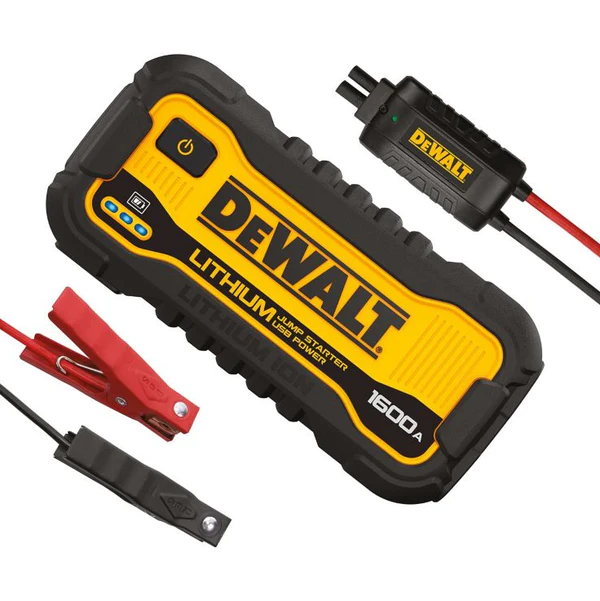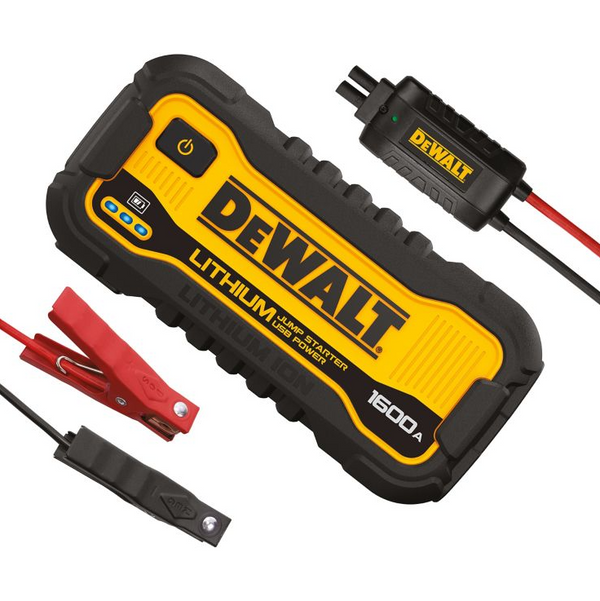As a car owner, the last thing you want is for your battery to die, especially when it's raining outside. You may be wondering if it's safe to use a portable car jump starter in such conditions. After all, water and electricity don't typically mix well. In this article, we will explore the safety precautions and considerations you need to keep in mind when using a portable car jump starter in the rain.
Can You Use a Portable Car Jump Starter in the Rain?
Using a portable car jump starter in the rain is generally safe, as long as you take certain precautions. The first thing to consider is the condition of your jump starter. Ensure that it is in good working condition and the cables are intact without any damage. This is crucial because damaged cables may allow water to seep into the electrical system, increasing the risk of a short circuit.
It's also essential to take safety measures to minimize potential risks. Wear gloves to avoid direct contact with electrical components, and make sure you do not touch both battery terminals simultaneously. Additionally, ensure that you connect the jumper cables in the correct order, following the manufacturer's instructions.
While there isn't an immediate risk associated with jump-starting a car in the rain, exposing the battery to water can lead to corrosion and shorten its lifespan. It's important to note that jump-starting a frozen or leaking battery can be dangerous and may even cause an explosion. Therefore, it's best to avoid jump-starting batteries under these conditions.
Can You Get Electrocuted by Using a Portable Car Jump Starter in the Rain?
One common concern when using a portable car jump starter in the rain is the risk of electrocution. However, the voltage of a car battery is typically 12 volts, which is too low to cause death by electrocution. Therefore, using a jump starter in wet conditions does not pose a higher risk of electrocution compared to using it in dry conditions.
That being said, it's important to be aware of other potential risks when jump-starting a car. Short-circuiting is one such risk, and you should take precautions to avoid any sparks or contact with metal objects. Additionally, the battery itself can become hot during the jump-starting process, so be cautious to prevent burns.
Is it Safe to Jump-Start a Car with a Portable Car Jump Starter in Lightning?
Jump-starting a car during a thunderstorm raises concerns about the risk of lightning strikes. While it is generally safe to use a portable car jump starter during a thunderstorm if you follow the necessary precautions, being outside during a lightning storm can be dangerous on its own. It is advised to wait until the worst of the storm has passed before attempting to jump-start your car. Find a safe location away from open fields and tall objects like trees, and wait until the storm subsides before proceeding.
Precautions to Take When Using a Portable Car Jump Starter in the Rain
To ensure your safety and the proper functioning of your portable car jump starter in rainy conditions, here are some precautions you should take:
- Inspect Your Jump Starter: Before using your portable car jump starter, inspect it to ensure it is in good working condition. Check the cables for any signs of damage or wear.
- Choose a Safe Location: Find a safe and dry location to perform the jump-start. Avoid standing in puddles or wet areas to minimize the risk of electrical shock.
- Wear Protective Gear: It's always a good idea to wear gloves when handling electrical components to protect yourself from any potential electrical hazards.
- Follow the Manufacturer's Instructions: Read and follow the manufacturer's instructions provided with your jump starter. Each model may have specific guidelines for use in wet conditions.
- Connect the Cables Correctly: Ensure that you connect the jumper cables in the proper order, typically starting with the positive terminal (+) and then the negative terminal (-). This prevents any sparks or short circuits.
- Keep the Jump Starter Dry: While it is safe to use a jump starter in the rain, try to keep the jump starter itself as dry as possible. Avoid exposing it to excessive water or moisture.
- Disconnect the Cables Properly: When you have successfully jump-started your car, disconnect the jumper cables in the reverse order of connection. This means removing the negative cable first, followed by the positive cable.
Remember, if you feel uncomfortable or unsure about jump-starting your car in the rain, it's always best to seek professional assistance or contact a roadside assistance service. They have the expertise and equipment to safely jump-start your car, regardless of the weather conditions.
Choosing a Reliable Portable Car Jump Starter
When it comes to purchasing a portable car jump starter, it's important to choose a reliable brand. One reputable brand to consider is ESN Tools, known for their high-quality and durable jump starters. Their jump starters are designed to withstand various weather conditions, including rain. Be sure to research and read reviews to find the best portable car jump starter that suits your needs.
Conclusion
Using a portable car jump starter in the rain can be done safely if you take the necessary precautions. Ensure that your jump starter is in good condition, follow the manufacturer's instructions, and take steps to minimize the risk of electrical shock. Remember to choose a reliable brand like ESN Tools for your portable car jump starter needs. By following these guidelines, you can confidently jump-start your car even in wet conditions and get back on the road quickly and safely.


